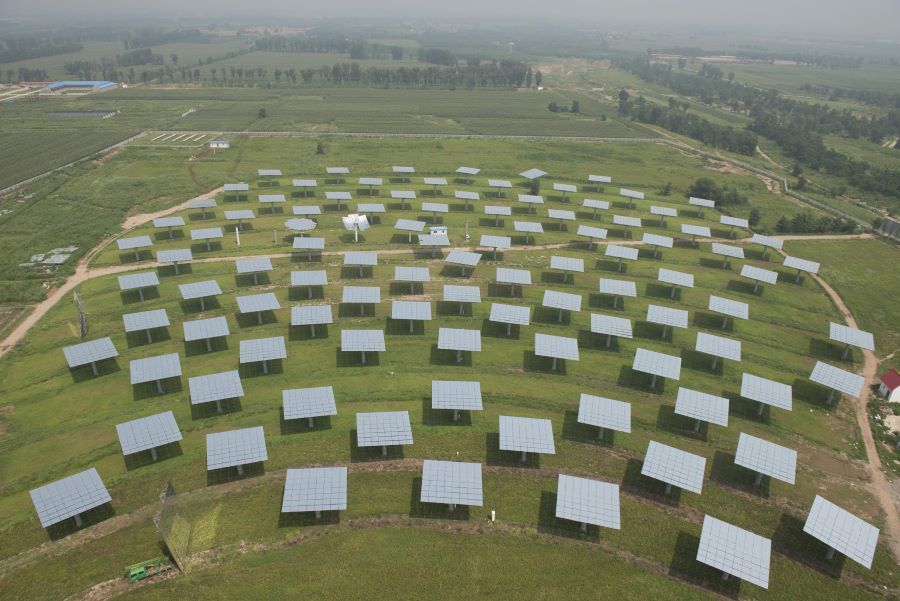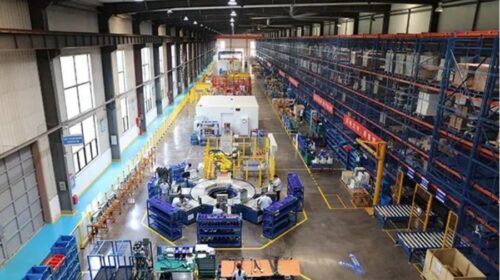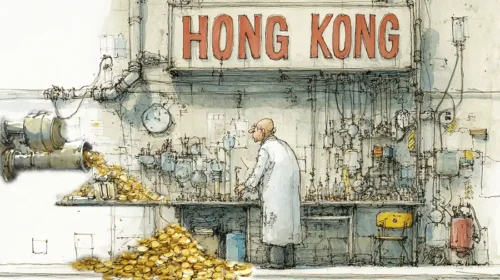Daqo Taps Richly-Valued China-Listed Unit to Raise $1.7 Billion for Expansion

Polysilicon maker says the expansion that will double its capacity will begin construction in March and be complete in the third quarter of 2023
Key takeaways:
- Daqo New Energy will tap its China-listed subsidiary to raise funds for construction of a major new production facility in Inner Mongolia
- Daqo’s holdings in the China-listed unit, Xinjiang Daqo, are worth more than four times its own latest market value
By Doug Young
Now we finally know what China’s U.S.-listed solar companies are planning to do with their newly-listed Shanghai subsidiaries: use them as cash-raising cows.
That’s the underlying message in the latest announcement from polysilicon maker Daqo New Energy Corp. (DQ.US), which says it will use its Shanghai-listed Xinjiang Daqo New Energy Co. Ltd. (688303.SS) unit to raise 11 billion yuan ($1.7 billion) in new cash. It will use the money to fund the first phase of a major expansion announced just last month, which will cost 8.55 billion yuan and double its capacity for polysilicon that is the main ingredient used to make solar panels.
This particular strategy of using the Chinese-listed company to fund its expansion looks quite brilliant, as it really takes advantage of the huge valuation discrepancy between Daqo’s New York- and Shanghai-listed companies. More on that shortly.
But investors don’t seem to be seeing it that way, at least not initially. Daqo’s New York-listed shares lost about 8% in the two trading days after the announcement, before rebounding slightly Wednesday. Still the stock now trades near a 52-week low, and has lost more than two-thirds of its value since touching an all-time high last February as its profits surged on soaring polysilicon prices.
Shares of Daqo’s China-listed company, which made their trading debut last July, also sagged 6.4% the day after the announcement. But they gained back most of that the next day and were down by a milder 2.3% from pre-announcement levels as of Wednesday’s close.
According to its latest announcement, Xinjiang Daqo will raise the 11 billion yuan through a private placement to institutional investors and use the majority of the funds for the first phase of a massive new facility in the Inner Mongolia city of Baotou. The announcement also provided a timeline for the project, saying construction would begin in March and finish in the third quarter of 2023.
The project will give Daqo an additional 100,000 MT of polysilicon production capacity, roughly doubling its capacity from the level it will reach later this year when another expansion in its hometown of Xinjiang comes on stream. The back story for all this expansion is a recent explosion in demand for solar panels as technology matures and the energy source no longer requires government support to be competitive with traditional fossil-fuel power.
The exploding demand has caused polysilicon prices to soar, with Daqo reporting its average selling price for the material reached $27.55 per kilogram in the third quarter, triple the $9.13 per kilogram a year earlier. That huge jump helped Daqo’s profit soar to $292 million in the third quarter from $21 million a year earlier, as revenue nearly quadrupled to $586 million.
The recent selling pressure on Daqo’s shares stems from concerns that polysilicon prices have peaked and will soon start to head downward. Adding to those concerns are the ongoing construction of huge amounts of new capacity by Daqo and its rivals, in a classic boom-bust cycle that many worry will result in a massive glut when all the new capacity starts coming on stream.
Valuation gap
All that said, we’ll spend the second half of this space looking at the huge valuation gap that is developing between the U.S.-listed shares for solar companies like Daqo and their more recently listed Chinese counterparts. Here we should point out that all the companies taking this route are carving out new smaller units from their U.S. listed companies for their China listings, all of which are trading on Shanghai’s Nasdaq-style STAR Market.
Daqo is typical of the group, saying it now obtains “a majority” of its revenue and profits through the 80.7% ownership of its China-listed unit, according to its latest announcement.
Next we’ll do a little math that shows just how big the valuation gap is. Following all the recent selling pressure, New York-listed Daqo has a current market value of about $2.8 billion. By comparison, the China-listed Xinjiang Daqo is worth 100 billion yuan, or about $16 billion at the latest exchange rates. That means the New York-listed Daqo’s 80.7% stake in the China-listed company alone is worth $12.8 billion, or more than four times the New York-listed company’s value.
The case is similar for solar panel maker JinkoSolar Holding Co. Ltd. (JKS.US), whose similarly-named China-listed unit, Jinko Solar Co. Ltd. (688223.SH), just made its IPO and began trading this week on the STAR Market. The U.S.-listed JinkoSolar has a market value of $2 billion, while its China-listed unit is worth 105 billion yuan, or $16.6 billion. That would make the U.S.-listed Jinko’s 58% stake in the China-listed company worth $9.2 billion, or more than four times the U.S.-listed Jinko’s own current market value.
All that said, it’s not difficult to see why Daqo is using its China-listed company to raise funds, since it can raise more than four times as much by issuing an identical amount of new shares through that company than it could using the U.S.-listed company. The ability to raise cash so cheaply should theoretically excite investors, though it appears their concerns about a polysilicon bubble are even bigger.
The valuation discrepancy shows up quite clearly in all of the typical valuation metrics when comparing New York-listed Daqo with China-listed Xinjiang Daqo. The former trades at a trailing price-to-earnings (P/E) ratio of 5, compared with a 23 for the latter. Similarly, the U.S.-listed company trades at a lowly price-to-book (P/B) ratio of just 1.6, versus a 9 for Xinjiang Daqo.
The U.S.-listed Daqo also looks relatively undervalued compared to its domestic and international peers, possibly due to risk related to its location in China’s politically sensitive Xinjiang region. Its P/E is significantly below the 18 for Germany’s Wacker Chemie (WCH.DE), and is even below the 8 for domestic peer Xinte (1799.HK).
To subscribe to Bamboo Works free weekly newsletter, click here






